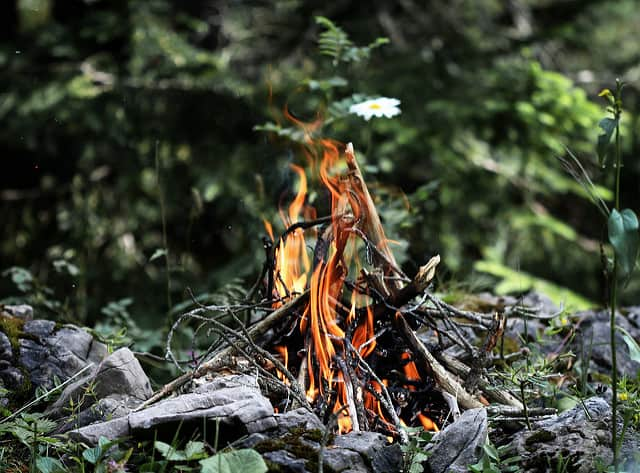Optimize Your Campfire Based on Firewood BTUs
OutdoorHub Staff 06.14.16

Setting out into the woods for an extended amount of time, whether it is to hunt, hike, fish or camp, requires some level of preparation. In your bag of tricks you’ll have some snacks and water to drink, but it doesn’t end there. You’ll also need to stay warm, and possibly prepare food over an open fire.
Campfire cooking seems easy enough. You find some miscellaneous kindling, make a pile, light it, and voila, right? Well, while it is true that this is one way to do it, there is certainly a better way. The fact of the matter is that not all wood is created equal. Some types will actually be more useful in generating heat than others, making those a better choice for your campfire needs.
BTUs for Dummies
Quantity of heat output is measured in BTUs, or British Thermal Units. What constitutes a BTU is determined by how much power is necessary in order to bring the temperature of 1 pound of water up by 1 degree Fahrenheit, which can in other words be described as one BTU being the equivalent of 1055 joules. Burners on a stove, for example, range between 9,500 and 12,000 BTUs based on size, but that is only the beginning. In fact, you yourself are giving off BTUs right now, as the human body does to the tune of about 6,400 per day or more based on your activity level and muscle mass.
When it comes to campfire cooking, BTUs can make the difference between fresh deer meat that is ready to eat in a short while or instead having to wait a lengthy amount of time. Since it is necessary to cook raw meats to a high enough heat in order to eradicate bacteria, using firewood that will burn hot gets the job done much more quickly. If you’re using a slow-burning wood, or don’t know the heat output of the wood you’re using, preparing your dinner becomes a guessing game that could make you ill if you guess wrong.
Some examples of wood types that emit fewer BTUs (12-20 million) include: aspen, basswood, cottonwood, eastern larch, hemlock, red alder, redwood, Sitka spruce, willow, white birch and yellow poplar.
Woods putting off more BTUs (21-28 million) that will enable faster cooking are: American beech, apple, big leaf maple, black locust, elm, hickory, ironwood, red maple, red oak, sugar maple, white ash, white oak and yellow birch.
While it is helpful to your campfire cause to know the best wood to use for the purpose you have in mind, you might not be familiar enough with each wood type to make a distinction. This is especially true if you are in unfamiliar territory where trees differ from your home area. In a scenario such as this, a good rule of thumb is to go for dense wood. The denser a piece of kindling is, and also the more seasoned, the hotter it will burn, giving you the BTUs necessary to get dinner going in a flash.
Because your campfire needs will vary, so should your firewood selection. Just as it is important to create an adequate flame to cook over, sometimes you need a fire for warmth, but perhaps you need only moderate warmth as opposed to high heat. In that case, select a wood that burns at a more suitable BTU level to knock the chill out but keep you from overheating at the same time. Whatever the case may be, nature provides a type of wood to suit your needs.

